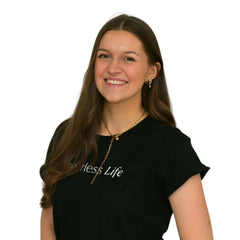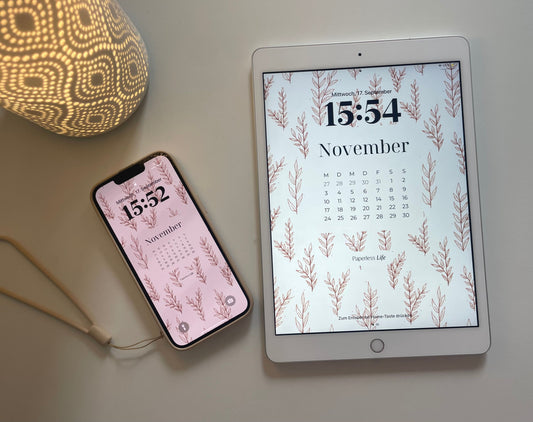Have you ever resolved to change something in your life, be it exercising more, eating healthier, or simply incorporating more mindfulness into your daily routine? But at some point, your motivation dwindles and you fall back into old habits after a few days or weeks? You're not alone! It typically takes 66 days to establish new habits. So, good habits take time!
We often fail to make long-term changes because we don't understand how habits really work and how to build them properly. But habits are the key to implementing sustainable change and improving our lives! 🌟
Maybe you know this: You feel stressed and overwhelmed because you can't manage to take regular breaks in your workday. You resolve to practice mindfulness for a few minutes every day, but it just doesn't work. This is where habits come in: If you use the right methods, you can establish new, long-term routines that bring you more serenity and structure. Does that sound good? Then let's look together at how you can establish positive habits. 🎯 If you'd like to join in right away, use our digital diary or sign up for our newsletter and receive the mindfulness diary for free – let's get started! ✨
📅🔑 Why are habits so important?
Habits are the things we do every day, often automatically, without even thinking about them. They determine how we use our time and how we achieve our goals. Good habits, like exercising regularly or eating healthy, can have a positive impact on our lives, while bad habits can slow us down. If you manage to establish healthy and helpful habits, you can reduce stress, be more productive, and improve your overall well-being. Habits therefore shape a large part of who we are and how we live our lives. 📈
If you're wondering how best to integrate new habits into your daily routine, the process can be divided into five phases, which we'll walk you through step by step! 👇🏼
🔄⚡The 5 phases of habit formation

The model that I would like to explain to you below is based on James Clear’s book “The 1% Method” as well as on findings from psychology, neuroscience and behavioral science.
1. Phase: The trigger (cue/trigger)
It all starts with a trigger—something that prompts us to take action. The trigger can be both external (like a reminder on your phone) and internal (like a feeling of stress).
Example: You receive a notification from your mindfulness app reminding you to do a short meditation exercise.
2nd Phase: Craving
After the trigger comes the desire—the inner urge to perform the action. This desire is the engine that drives you to actually implement the habit.
Example: After a long day at work, you feel the need to find yourself again and relax through a mindfulness exercise.
3rd phase: action (routine)
Now comes the most important part: actually performing the habit. The more often you repeat the action, the more firmly the habit becomes established.
Example: You take 10 minutes every evening to write in your mindfulness workbook and reflect on your habits.
4th Phase: Reward
To maintain the habit, you need a reward – something that makes you feel positive and increases the likelihood that you will repeat the action.
Example: After your reflection, you feel calmer and clearer inside, which helps you end the day on a positive note. 🌟
5th phase: Stabilization (retention)
Over time, the action becomes automated. At this stage, the habit is so firmly integrated into your daily routine that you no longer have to actively think about it.
Example: Your daily mindfulness break is now a fixed routine that you automatically incorporate into your daily routine.

🧠🔗 The power of habit coupling
A particularly effective trick for establishing habits is habit linking, described in James Clear's book "The 1% Method ." This involves linking a new habit to an existing routine. This way, you firmly anchor the new habit in your daily life.
This is how it works:
➡️ Think of a habit that you already do every day (e.g. brushing your teeth).
➡️ Link the new habit directly to it. For example: "After brushing my teeth, I'll write in my journal for 5 minutes."
➡️ The existing habit acts as a trigger and helps you integrate the new habit more easily into your life.
Another example: You always drink your coffee after breakfast. Now you connect this moment with your new mindfulness routine: "After I make my coffee, I sit down for 5 minutes and reflect on my day."

Why you should start integrating positive habits into your daily life now:
✅ More productivity: Routine tasks cost less energy and time, so you can focus on more important things.
✅ Better mental health: Regular mindfulness exercises or breaks help reduce stress and clear your head.
✅ Healthier lifestyle: Healthy habits such as exercise or healthy eating become part of your everyday life – without much effort.
✅ Better goal achievement: Long-term goals are easier to achieve through small, continuous progress.

Conclusion: Use your mindfulness workbook to form habits!
Let’s summarize the 5 phases again:
1. Phase: The trigger (cue/trigger)
2nd Phase: Craving
3rd phase: action (routine)
4th Phase: Reward
5th phase: Stabilization (retention)
With the right strategy, you too can integrate positive habits into your daily routine. Start small, stay consistent, and use the habit-linking method to achieve lasting change. If you want to track your progress over the long term, our digital journal is a great option, with one page per day.
If you're looking for support, use our free mindfulness workbook! It features various pages to help you establish new habits and reflect on your progress—the perfect start to integrating positive routines into your life! 🌈✨







